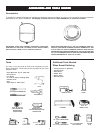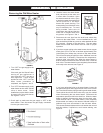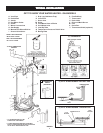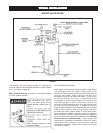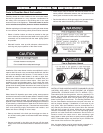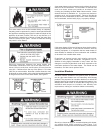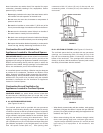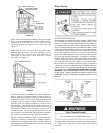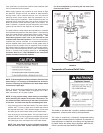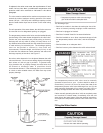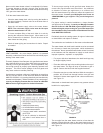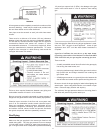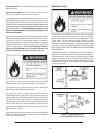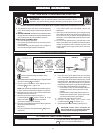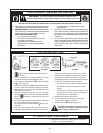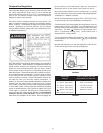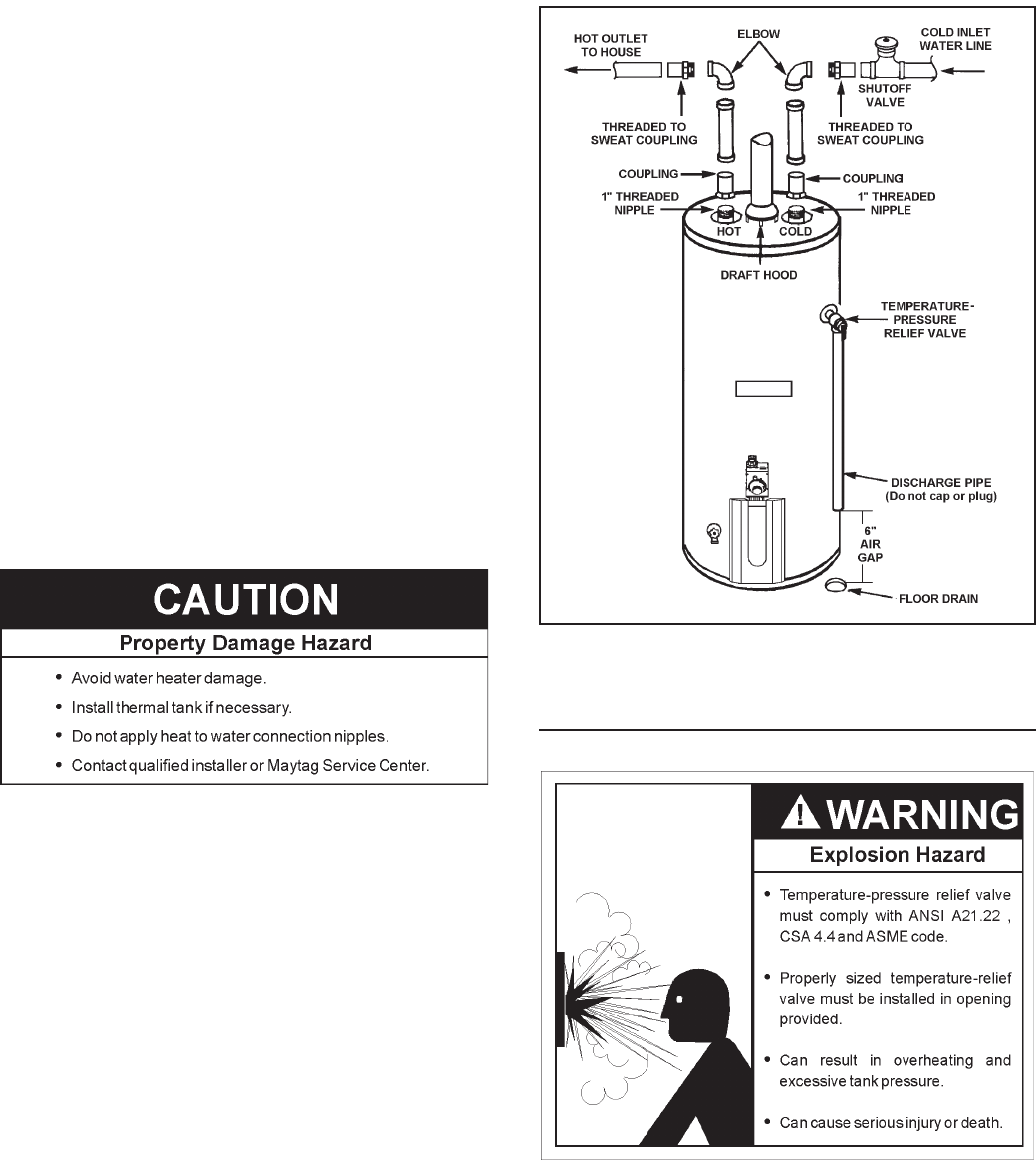
14
Toxic chemicals, such as those used for boiler treatment shall
not be introduced into this system.
Water supply systems may, because of such events as high
line pressure, frequent cut-offs, the effects of water hammer
among others, have installed devices such as pressure
reducing valves, check valves, back flow preventers, etc. to
control these types of problems. When these devices are not
equipped with an internal by-pass, and no other measures are
taken, the devices cause the water system to be closed. As
water is heated, it expands (thermal expansion) and closed
systems do not allow for the expansion of heated water.
The water within the water heater tank expands as it is heated
and increases the pressure of the water system. If the relieving
point of the water heater’s temperature-pressure relief valve is
reached, the valve will relieve the excess pressure. The
temperature-pressure relief valve is not intended for the
constant relief of thermal expansion. This is an unacceptable
condition and must be corrected. It is recommended that any
devices installed which could create a closed system have a
by-pass and/or the system have an expansion tank to relieve
the pressure built by thermal expansion in the water system.
Refer to the Thermal Expansion section under Troubleshooting
Guide or contact local plumbing authority or call Maytag
Customer Service at 1-800-788-8899 for an authorized
installer on how to control this situation.
NOTE: To protect against untimely corrosion of hot and cold
water fittings, it is strongly recommended that di-electric
unions or couplings be installed on this water heater when
connected to copper pipe.
Figure 16 shows the typical attachment of the water piping to
the water heater. The water heater is equipped with 1” NPT
water connections for 75 gallon models.
NOTE: If using copper tubing, solder tubing to an adapter
before attaching the adapter to the water connections. Do
not solder the water lines directly to the water connections
on the tank. It will harm the dip tube and damage the tank.
• Look at the top cover of the water heater. The water outlet is
marked “HOT”. Put two or three turns of teflon tape around
the exposed end of the 1” NPT threaded nipple. Connect the
hot water pipe to the hot water outlet on the water heater.
• Look at the top of the water heater. The cold water inlet is
marked “COLD”. Put two or three turns of teflon tape around
the exposed end of the 1” NPT threaded nipple. Connect the
cold water pipe to the cold water inlet of the water heater.
NOTE: This water heater is super insulated to minimize
heat loss from the tank. Further reduction in heat loss
can be accomplished by insulating the hot water lines
from the water heater.
FIGURE 16.
Temperature-Pressure Relief Valve
This heater is provided with a properly certified combination
temperature - pressure relief valve by the manufacturer.
The valve is certified by a nationally recognized testing
laboratory that maintains periodic inspection of production of
listed equipment of materials as meeting the requirements
for Relief Valves Hot Water Supply Systems, ANSI Z21.22-
CSA 4.4 and the code requirements of ASME.



